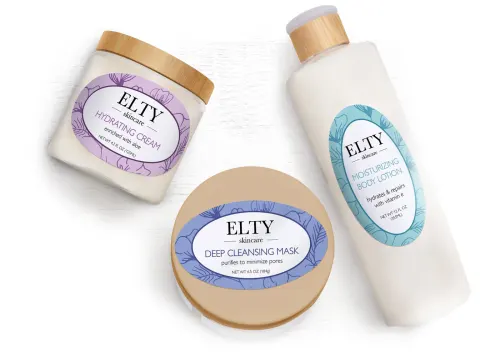Lotion bars are a luxurious, eco-friendly skincare product that has gained popularity in recent years for their convenience, portability, and moisturizing benefits. They come in solid form, usually in a small bar or round shape, and melt upon contact with the skin, releasing nourishing oils and butters. But, as with any beauty or skincare product, the right packaging and labeling can make all the difference in attracting customers and conveying brand values. Lotion bar labels serve not only as a legal requirement but also as a vital marketing tool that speaks to the quality and appeal of your product.
In this comprehensive guide, we’ll discuss everything you need to know about lotion bar labels, from their design and content requirements to printing and branding strategies that will make your product stand out on the shelves.
What Are Lotion Bar Labels?
Lotion bar labels are the tags, stickers, or printed designs attached to lotion bar packaging. These labels serve multiple functions:
- Product Information: Labels provide crucial details about the lotion bar, such as its ingredients, scent, and intended use.
- Brand Identity: Labels reflect the brand’s personality, style, and values. A well-designed label can set the tone for the entire product line.
- Legal Compliance: Depending on your region, certain labeling requirements may be necessary for cosmetics or skincare products. These can include ingredient lists, usage instructions, and expiration dates.
- Aesthetic Appeal: A beautifully designed label can draw attention to the product, making it more appealing to potential buyers.
A well-crafted lotion bar label is an essential part of the product’s overall presentation and marketing strategy.
Key Elements to Include on Your Lotion Bar Labels
Creating lotion bar labels that are both aesthetically pleasing and informative requires careful consideration of several key elements. Here are the essential components to include:
1. Brand Name and Logo
Your brand name and logo should be the most prominent elements on your lotion bar labels. It is essential for building brand recognition and ensuring that customers can easily identify your product. The logo and name should reflect the values of your brand and the image you wish to portray, whether it’s luxury, sustainability, or natural wellness.
2. Product Name and Description
Your product name should be clear and easy to read. It may also include a brief description or tagline that describes what makes your lotion bar special. For example:
- Lavender Bliss Lotion Bar
- Nourishing Shea & Cocoa Butter Lotion Bar
This helps consumers understand the product’s benefits at a glance.
3. Ingredient List
For safety and transparency, it is essential to list all ingredients used in your lotion bar. This not only helps customers with allergies or sensitivities make informed decisions, but it’s also a legal requirement in many regions for skincare and cosmetic products.
- Always list ingredients in descending order by weight.
- If your lotion bar contains essential oils or other fragrant components, make sure to note any potential allergens (e.g., nuts, dairy, or gluten).
- Consider adding a note about the sourcing of your ingredients (organic, fair trade, cruelty-free, etc.) if that’s a key aspect of your brand.
4. Usage Instructions
Provide clear and concise instructions on how to use the lotion bar. Lotion bars are different from liquid lotions, so your customers need guidance on how to apply them effectively. For example:
- Rub the bar directly onto your skin where moisturization is needed.
- Massage in circular motions until absorbed.
This ensures that customers have a positive experience with your product, knowing exactly how to use it.
5. Net Weight or Volume
Depending on your packaging format, include the net weight (in ounces or grams) or volume (in milliliters or fluid ounces) of the lotion bar. This is particularly important for retail settings, where customers may compare product sizes and prices.
6. Expiration Date or Shelf Life
If your lotion bars are handmade or include natural ingredients, it’s important to include an expiration date or shelf life. This helps customers understand how long the product will last and ensures they use it while it’s still effective.
7. Certifications and Claims
If your lotion bar has any certifications that align with consumer interests, such as being organic, vegan, or cruelty-free, it’s essential to highlight these claims on the label. These distinctions can significantly impact purchasing decisions for eco-conscious and health-conscious consumers.
8. Contact Information and Website
Make sure to include your business’s contact details, such as your website, phone number, or email address. This allows customers to reach out for more information, submit feedback, or find additional products in your line.
Designing Lotion Bar Labels: Tips for Success
Designing a lotion bar label requires a balance of creativity and functionality. Your label should stand out visually while also being clear, informative, and easy to read. Here are some important design considerations:
1. Use High-Quality Graphics
The graphics on your lotion bar labels should reflect the quality of the product itself. Use high-resolution images, logos, and graphics to ensure the label looks professional and polished. Avoid pixelation, which can make your label appear unprofessional.
2. Choose Colors Wisely
Colors have a psychological impact on consumers. Select a color palette that matches your brand’s identity and the nature of the product. For example:
- Earthy tones like greens, browns, and creams work well for natural or organic skincare products.
- Bold, vibrant colors like pinks, purples, and oranges may be ideal for a fun, youthful, or trendy brand.
- Muted pastels create a calming, spa-like feel, perfect for luxury or wellness products.
3. Select the Right Font
Font choice is crucial for legibility. Opt for clean, easy-to-read fonts, especially for essential information like ingredients and usage instructions. Avoid overly intricate fonts that may be hard to read at smaller sizes.
4. Minimalistic vs. Detailed Design
Your design can be as minimalist or detailed as you like, depending on your brand style. A minimalist design may appeal to those seeking simplicity and elegance, while a more detailed label may convey luxury and richness.
5. Consider Sustainable Materials
If sustainability is important to your brand, consider using eco-friendly materials for your lotion bar labels. Look for labels made from recycled paper, biodegradable materials, or materials that are compostable. This resonates well with consumers who prioritize eco-conscious products.
Printing Lotion Bar Labels
Once you’ve designed your lotion bar labels, the next step is printing them. There are several options for printing, depending on your budget and needs:
1. Professional Printing Services
If you want a high-quality, polished finish for your lotion bar labels, professional printing services are the way to go. They offer various materials, finishes, and sizes to ensure your labels meet your brand’s standards.
2. Home Printing
For small batches or if you have a DIY approach, you can print labels at home using adhesive label sheets. However, ensure that the materials are water-resistant, especially if your lotion bars will be exposed to moisture.
3. Online Print-on-Demand Services
There are several online services where you can upload your designs, select label sizes, and get them printed and shipped to you. Services like Vistaprint, Sticker Mule, or Avery are popular for their ease of use and variety of label options.
Conclusion
The design, content, and quality of your lotion bar labels play a pivotal role in how your product is perceived by consumers. A well-crafted label not only informs your customers but also reflects your brand’s personality and values. By combining the right ingredients, clear information, and eye-catching custom packaging design, you can ensure that your lotion bars stand out in a crowded market.




